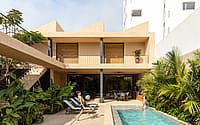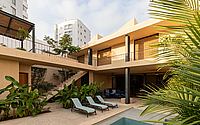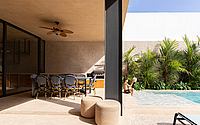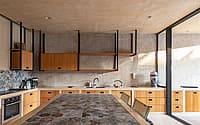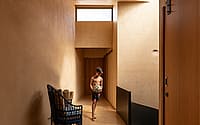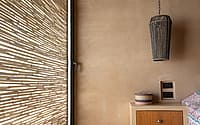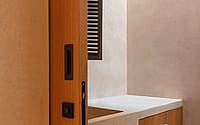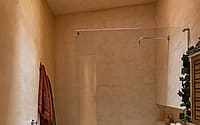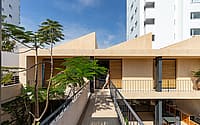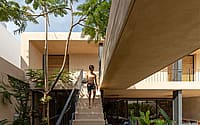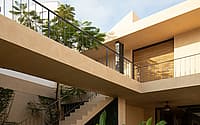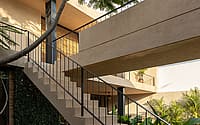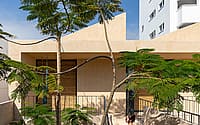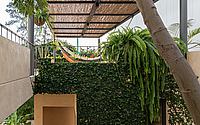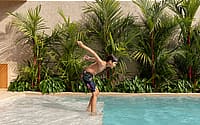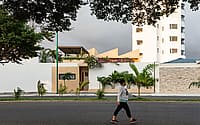Casa Tres Aguas by Diez + Muller Arquitectos
Casa Tres Aguas is a modern two-story house located in Bahía de Caráquez, Manabí, Ecuador, designed in 2020 by Diez + Muller Arquitectos.

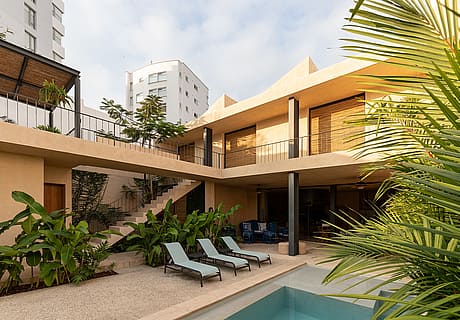

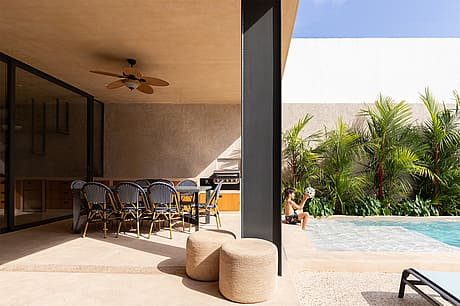
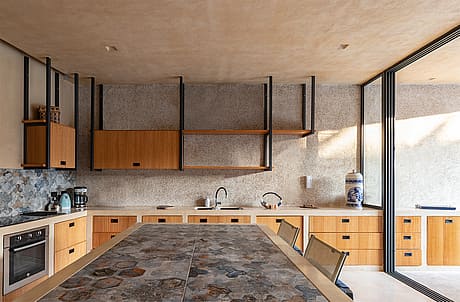

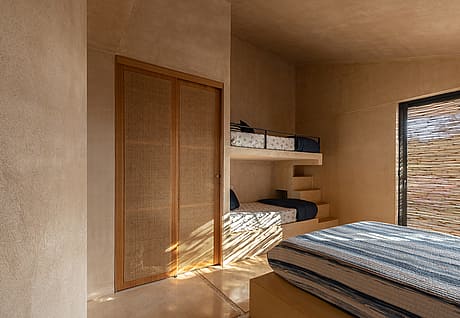
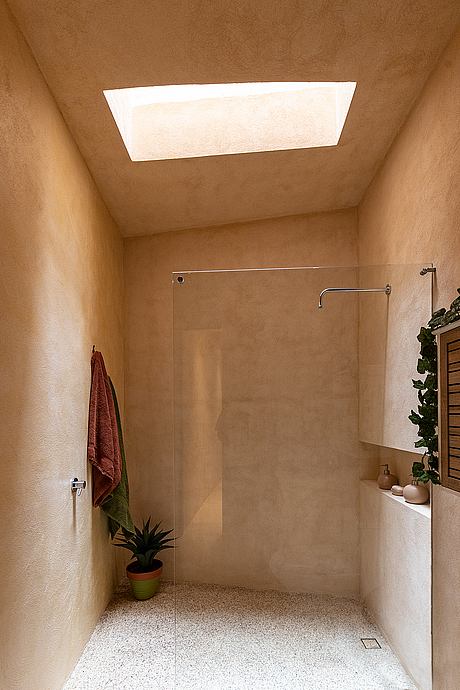



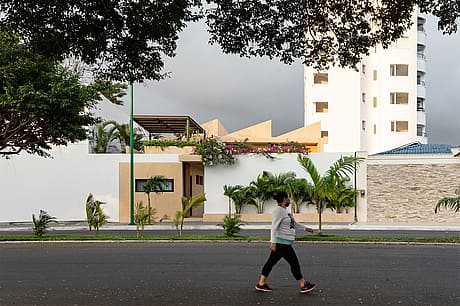
Description
Background:
In recent decades, the coastal city of Bahía de Caráquez has been characterized as a growth and development hub for the tourism and leisure industry. Unfortunately, in 2016 a major earthquake compromised several buildings in the region, especially the tallest ones. Many had to be demolished leaving empty land lots and the challenge to rebuild a city located in a seismic zone and with poor soil quality.
The Project and the City:
In its context, the project sees the opportunity to become a contributor to the city. By appraising and betting for low-rise single-family home units, either through building on empty lots or re-inhabiting abandoned homes, the project stimulates 1. The economic recovery of the city. 2. Promotion of urban life development. 3. Improvement and humanization of relations between residents. 4. Reduction of risk for damage of inherent future seismic events.
The Assignment:
The client, who lost his apartment due to the 2016 earthquake, primarily wants to return to Bahia de Caraquez for short and long-stay vacations throughout the year. Our task first involves the search and selection of the project’s construction site. We identify a 300sqm plot of land located in the neighborhood known as “La Ciudadela”. This neighborhood is characterized by domestic-scale single-family homes near the ocean. However, the development of high-rise buildings on the coastline affected the area’s ocean views and breeze. Despite this situation, we consider that the neighborhood retains interesting attributes and an identity that gives grounds for the development of the project.
Design Proposal:
By having a reduced construction area surrounded by buildings, the implementation of the house is tackled by adjoining 3 sides in order to generate an “L” shaped layout that allows for 1. Compliance with the required program. 2. Visual protection from neighboring buildings and future constructions. 3. Generation of open spaces (patios and gardens) that capture city views, light, and ventilation and connect all the house’s rooms.
The house is set on 2 floors. The ground floor accommodates the maintenance and social areas and the main bedroom that belongs to the family’s mother/grandmother, who will be residing in the house for long periods of time thus taking full advantage of all single-level integrated spaces.
On the upper floor, we find additional bedrooms, all three are designed to accommodate each daughter’s respective family. The bar-shaped volume has a set of slanted roofs that seek to enrich the spatiality of the rooms and generate a physical identity for each family’s space both from inside and outside.
The stairs, bridges, and terraces generate intermediate spaces and seek the integration and full enjoyment of the house, both horizontally and vertically.
With the intention of generating a volumetric-spatial unit, a single material with different applications is used for the walls, ceilings, floors, and furniture, which in turn, is enriched by incoming natural light projected on the distinct applied textures.
Photography courtesy of
Visit Diez + Muller Arquitectos
- by Matt Watts